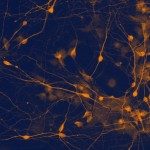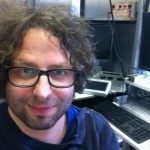Link to Pubmed [PMID] – 15280163
Am J Physiol Renal Physiol 2004 Dec; 287(6): F1233-43
The distal convoluted tubule (DCT) is a heterogeneous segment subdivided into early (DCT1) and late (DCT2) parts, depending on the distribution of various transport systems. We do not have an exhaustive picture of the Cl(-) channels on the basolateral side: the presence of ClC-K2 channels is generally accepted, whereas that of ClC-K1 remains controversial. We used here single-cell RT-PCR and patch clamp to probe Cl(-) channel heterogeneity in microdissected mouse DCT at the molecular and functional levels. Our findings show that 63% of the DCT cells express ClC-K2 mRNA, either alone (type 1 cells: 47 and 23% in DCT1 and DCT2, respectively), or combined with ClC-K1, mostly in DCT2 (type 2 cells: 33%), but 37% of DCT1 and DCT2 cells do not express any ClC-K. Patch-clamp experiments revealed that a Cl(-) channel, with 9-pS conductance and Cl(-) > NO(3)(-) = Br(-) anion selectivity sequence, is present in the DCT1 and DCT2 basolateral membranes (87 and 71% of the patches, respectively). This dominant channel is likely to be ClC-K2 in type 1 cells. In type 2 cells, it could be ClC-K2 and/or ClC-K1 homodimers, but also ClC-K1/ClC-K2 heterodimers, or a mixture of all combinations. A second, distinct Cl(-) channel (13% of DCT1 patches, 29% of DCT2 patches) also displayed 9-pS conductance but had a completely different anion selectivity (I(-) > NO(3)(-) > Br(-) > Cl(-)), which was not compatible with that of the ClC-Ks. This indicates that a Cl(-) channel that is unlikely to belong to the ClC family may also be involved in Cl(-) absorption in the DCT2.

